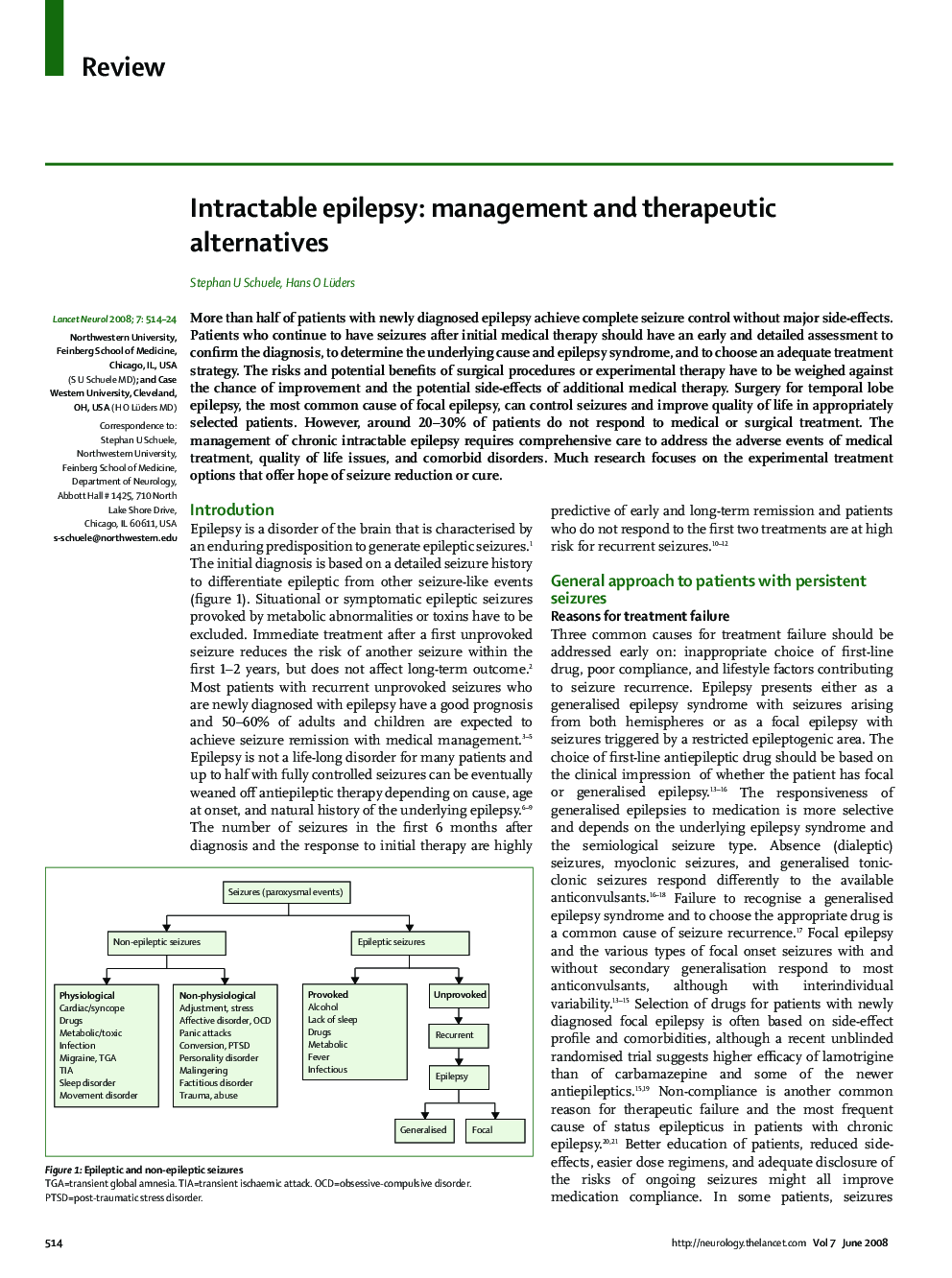| Article ID | Journal | Published Year | Pages | File Type |
|---|---|---|---|---|
| 3067631 | The Lancet Neurology | 2008 | 11 Pages |
SummaryMore than half of patients with newly diagnosed epilepsy achieve complete seizure control without major side-effects. Patients who continue to have seizures after initial medical therapy should have an early and detailed assessment to confirm the diagnosis, to determine the underlying cause and epilepsy syndrome, and to choose an adequate treatment strategy. The risks and potential benefits of surgical procedures or experimental therapy have to be weighed against the chance of improvement and the potential side-effects of additional medical therapy. Surgery for temporal lobe epilepsy, the most common cause of focal epilepsy, can control seizures and improve quality of life in appropriately selected patients. However, around 20–30% of patients do not respond to medical or surgical treatment. The management of chronic intractable epilepsy requires comprehensive care to address the adverse events of medical treatment, quality of life issues, and comorbid disorders. Much research focuses on the experimental treatment options that offer hope of seizure reduction or cure.
